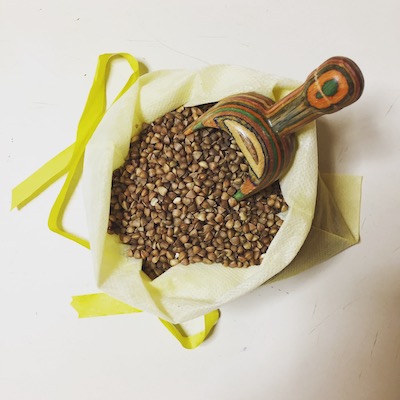Healthy eating is the foundation of overall health. Good nutrition is the process by which the body uses food for energy, growth, and maintenance and repair of body tissues. Different foods supply us with short-term or long-term energy. Carbohydrates are the main source of energy, and the easiest form of energy for the body to use.
1. Simple carbohydrates are mainly sugars. These include table sugar, brown sugar, natural and artificial sweeteners, honey, corn syrup, fruits, fruit juices, sweets, white bread, cookies, sugary desserts, biscuits, and cakes; and milk sugars (ice cream, cheese, milk, and yogurt), whose refining and overcooking have already turned their complex carbohydrates into simple sugars. Simple carbohydrates provide short-term energy followed by an equally fast drop in energy. After that drop, we want more sugar. These foods don’t provide lasting energy. They are useless, anti-nutrient, and even damaging to optimal health. Stay away from refined-sugar foods. Instead of muffins, crackers, bagels, and breads, satisfy your sweet tooth with nuts, seeds, and naturally sweet fresh or dried fruits and vegetables.
When you desire health and wellness, it is extremely important to pay attention to sugar intake. It must be minimized or avoided. Reduce or eliminate the use of simple and processed carbohydrates such as breads and pasta made with white flour. We should think of processed carbohydrates as hidden sugar in the diet. Occasional use is all right, but in general, one should seek high-quality carbohydrates. For example, when buying items like pasta, seek whole-grain items. They come in countless varieties, each with its own delicious taste and texture. Many stores have a very good selection of both domestic and imported dried pastas .such as quinoa pasta, rice noodles, brown rice pasta, corn pasta (gluten free), and homemade spaghetti.
Pasta is one of the simplest foods to cook, and is loved by almost everyone. It is a smart choice for a healthy diet, especially with lots of vegetables. Experiment with pasta recipes. Fill your refrigerator with sun-dried tomatoes in oil, olives, green onions, fresh basil, parsley, mint, lemons, limes, oranges, sweet peppers, mushrooms, and other fresh foods. Celebrate a wisely chosen pasta with a crisp green salad.
2. Complex carbohydrates, or starches. These include whole grains, whole-grain breads, and brown rice; starchy vegetables like potatoes and yams; beans, peas, lentils, and other legumes; and vegetables like broccoli, zucchini, asparagus, cabbage, and turnips. These are your body’s best sources of energy. They break down very gradually, release their sugar content slowly, help the body form stool, and leave the system quickly. They require longer digestion to be well absorbed. Complex carbohydrates slow the absorption of sugar, and keep blood sugar in balance.

Whole grains are excellent sources of nutrition, as they contain essential enzymes, iron, dietary fiber, vitamin E, and the B-complex vitamins. Because the body absorbs grains slowly, they provide sustained, high-quality energy. Humans have been eating grains for thousands of years. We can choose from a great selection of whole grains such as oats, quinoa. sorghum, spelt, sweet rice, amaranth, brown rice, blue corn, bulgur, buckwheat, couscous, millet, rye, wild rice, barley, teff, farro, and kaniwa.
Each grain has it is own benefits. For example, brown rice promotes good digestion and relieves depression. Buckwheat stabilizes blood sugar, normalizes blood pressure, and creates blood. Quinoa strengthens the kidneys, heart, and lungs, and is easy to digest. It is an ideal food for endurance. Grains speed up metabolism and reduce stress. Consider eating them in the morning, as they provide long-lasting energy and a light feeling. Warm and comforting whole grains provide amazing nutritional support. Incorporate good-quality grains into your diet. They will help you balance your body. Whole grains are some of the most nutritious foods in the world.
Another complex carbohydrate is soba noodles. “Soba” is Japanese for buckwheat; buckwheat offers good-quality protein. Soba noodles are packed with complex carbohydrates. Buckwheat noodles are flavorful enough to be enjoyed without any sauce. These noodles will work for either lunch or dinner. The Japanese serve soba cold, and enjoy them particularly in hot summer weather. They are usually served with a cold dipping sauce flavored with soy sauce, rice wine, and thinly sliced green onions. Soba noodles are exceptionally versatile. You will recognize them by their color, which varies from pale beige to brownish gray. You can serve soba in soups, with ginger, scallions, and spinach. Try tossing the noodles with crisp slices of chilled cucumber, some black-and-white toasted sesame seeds, rice wine vinegar, and a dash of soy sauce for a great summer meal.
I am a buckwheat woman. I eat grains almost every morning, and find myself requiring less food during the day. I love eating whole grains for breakfast. My favorites are buckwheat, brown rice, millet, quinoa, and old-fashioned oats. I dress my grains simply, with ghee (clarified butter) and cinnamon. The fewer ingredients, the better.
Try not to overeat carbohydrates. Cut back on them, from pasta to fruit juice. Consuming excessive amounts promotes body fat. Stop eating before you feel full. Also, the more physically active you are, the more you will burn stored carbohydrates. Make a conscious decision to cut back on refined carbs. Switch from highly refined grains to delicious whole grains, which are good and healthy carbs. Balance the amount of complex carbs (one or two servings of vegetables a day, and whole grains in moderation).